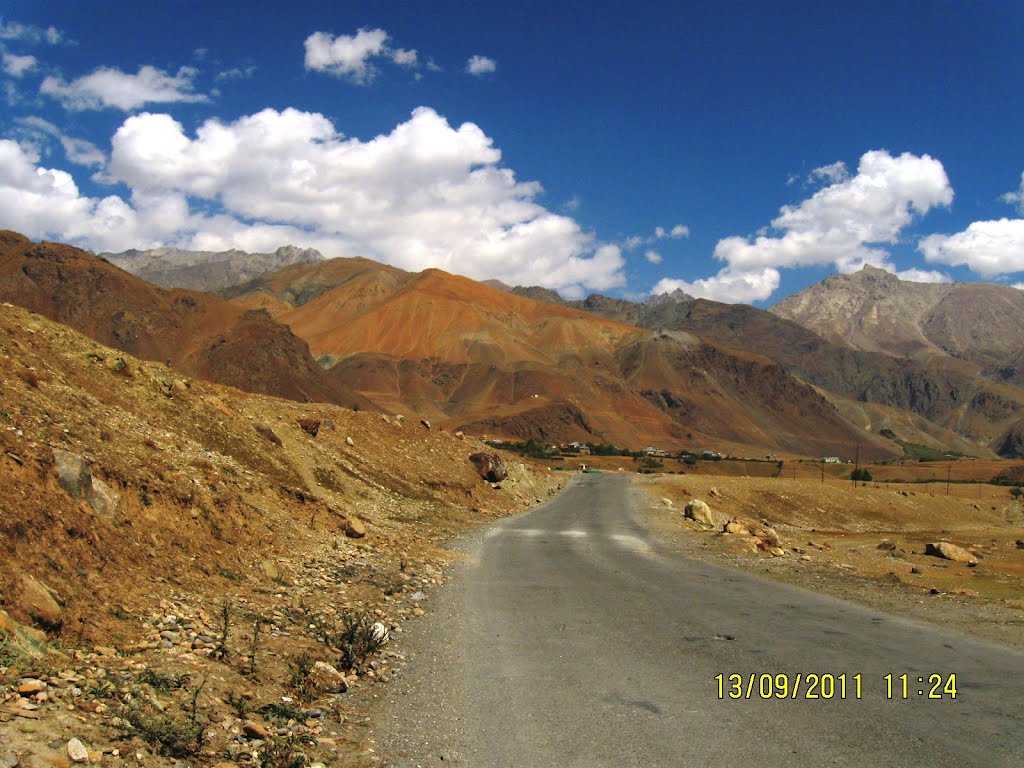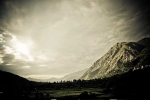"Gateway to Ladakh"
Dras Tourism
Dras, a town of the Kargil district in the state of Jammu and Kashmir is at a distance of about 60 km from the Kargil district and is often called the 'Gateway to Ladakh'. It is located at a height of 3230m and is the second coldest place (the first being Siberia) inhabited in the world, with temperatures dropping to as low as -45 degree celsius
The three famous pinnacles tiger hills, the three pimples and Tololing can be viewed from Dras. The town is also a trekking base where people stop over during their trek from Minamarg to Amarnath via Zojila Pass. This paradise, about 60 Km fromKargilwas occupied by the Pakistani troops during the Kargil war in 1999. The war continued for about two months during which course several Army men died. But the Indian army recaptured Dras and to commemorate their sacrifice, Dras war memorial was built which is today, the main attraction of this village.
Download Dras PDF Guide >
What's Great?
Great destination to experience the stunning landscape throughout the year.
What's not so Great?
Terrorism prone area but well guarded by the Indian Military. Heavy snowfall during winters causes roadblocks.
For Whom
Dras is ideal for the avid travellers and the trekkers who are in search of a pure and undisturbed beauty of the Himalayas.
Coldest inhabited place of India
Situated at an altitude of 3,280 m, Dras is the coldest inhabited place in the world after Siberia. Located on the national highway 1D, connecting Srinagar to Ladakh, the small town of Dras is also known as "The Gateway To Ladakh". The place became famous after the Kargil War in 1999. This intensely beautiful and coldest Himalayan pass is like none other.
For a travel enthusiast, a road trip to Kargil through Dras must be on his bucket list. Also, Dras is the first village of Zoji La Pass, and hence, it is a host to numerous treks viz. trek to Saliskote, Suru Valley, and Mushko Valley Trek.
A Natural Paradise
Hues of the mountain
The breathtaking beauty of Dras comes to life as the dusk falls over the barren, brown mountains. The shadows thus formed create different shapes and textures, as they move across the uneven landscape.
Dras river flowing through the fields
The lush green cover and the beautiful Dras river (formed as a ?meltwater river from glaciers) flowing are a sight to behold during summers, when the river finds a way to flow gracefully through a dense group of sea buckthorn, among the a patchwork of fields in multiple shades of green.
Hamlets nested in valleys
Numerous small villages are nestled among the towering mountains, surrounded by terrace farms, cut out along the hillside. Carefully nurtured soil is preserved between the vertical rocks and boulders. These terrace farms are home to poplar, willow, orchard of apples, apricots, barley and buckwheat.
Dards and Baltis
For hundreds of years, people of both Dardic and Baltic communities have settled on this frosty land and conquered the extreme cold conditions. The majority of the population is Muslim. However, there is a small section which follows Buddhism. The people here have built colourful shops and houses made of wood and bricks, which line both sides of the road with spectacular snow-capped mountain peaks as the backdrop. The inhabitants have successfully nullified the engulfing snow in winter (during the period of mid-October to early May) to carry on with the primary occupation of trading and transportation. They also help the tourists to navigate the area. The nature of the locals is amicable and warm, and they love sharing stories and folklore with the tourists.
One Day Itinerary
Dras is mainly a trekking base, but if someone wants to visit this place, it is recommended not to miss Dras war memorial. Dras is usually visited as a part of visits to places like Kargil and other major treks. It is recommended to stop over at Dras for some time to see the memorial. If you have a whole day to spend at the place, use the time to enjoy the beauty of the place and maybe even explore the photographer within you.
Restaurants and Local Food in Dras
People in this region savor some palatable Tibetan dishes like momos and Thukpa, Punjabi dishes like Kulcha and Chole and some Kashmiri cuisines.
Jun-Sepis the best time to visit Dras
Being the coldest place in India, Dras experiences summer continental climate with the winter temperature falling down to as low as -45 degrees Celcius. It is advisable to avoid travelling during winters. Summer and pre-winter are the ideal time to visit Dras.
Weather in Dras
Loading...
Dras in Summer (April - June)
The sun shines bright and keeps the day at Dras warm and pleasant. The place has beautiful clear blue skies. During early April, you can walk on the frozen lake and have a clear view of the snow-capped mountains as the place recovers from winters. Average temperature during summers is 15 degrees Celcius.
Dras in Monsoon (July - August)
The monsoon months, i.e. late July till the end of August sometimes experience landslides and cloudbursts. Not an ideal time to visit the Dras valley.
Dras in Winter (September - March)
Travellers prefer to visit Dras during pre-winters. The sun shines bright and it is an ideal time for trekking. Between November to February, this place can get unbearable when the temperature drops to -22 degrees Celcius and sometimes as low as -45 degrees Celcius during peak winter season. Most trekking routes shut down during this time.
Monthly Weather in Dras
Month
Avg. Minimum (°C)
Avg. Maximum (°C)
January
-8
5
February
-7
10
March
-2
14
April
3
20
May
10
25
June
11
26
July
18
29
August
17
27
September
12
27
October
3
24
November
-4
16
December
-7
12
Comments on Dras
Post Your Comment


 Dras war memorial
Dras war memorial Minamarg
Minamarg Matayen
Matayen Ningoor Masjid
Ningoor Masjid Amarnath
Amarnath Sonamarg
Sonamarg Srinagar
Srinagar Pahalgam
Pahalgam Manali
Manali Baltal
Baltal